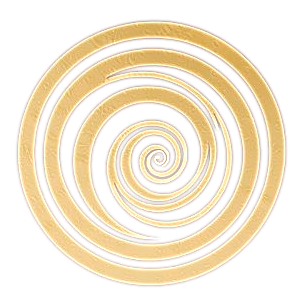The Invisible Forces of Attraction: How “Falling in Love” is Beyond Our Control
We’ve all experienced it-that inexplicable pull toward someone that defies logic and resists explanation. Despite our best efforts to rationally choose partners based on shared values and compatibility checklists, romantic attraction remains stubbornly mysterious. We speak of “falling” in love precisely because it happens to us rather than being something we consciously orchestrate. The truth is that the vast majority of what draws us to another person operates beneath the threshold of conscious awareness, driven by biological imperatives, psychological needs, and deeply embedded patterns established long before we ever meet our romantic partners.
The Biology of Attraction: Reading Genetic Compatibility
At the most fundamental level, human beings possess remarkable subconscious abilities to assess information about genetic compatibility through sensory information. Research into the Major Histocompatibility Complex (MHC)-a set of genes crucial to immune system function-reveals that humans can detect genetic compatibility through scent. Studies have shown that people tend to prefer the body odor of potential partners whose MHC genes differ from their own, a preference that makes evolutionary sense: offspring from parents with diverse MHC genes inherit more robust immune systems capable of recognizing a wider array of pathogens.
While the research on MHC-based attraction is well-documented, it’s important to note that these mechanisms don’t always operate with equal prominence in every attraction. The strength of these biological signals varies among individuals and contexts, forming just one layer of the complex subconscious calculus of desire.
Beyond scent, we subconsciously evaluate facial symmetry and other physical markers that signal genetic fitness. Facial symmetry has been consistently linked to attractiveness across cultures, as it indicates developmental stability and the absence of genetic mutations or environmental stressors during growth. We perceive and respond to these markers without conscious deliberation-our brains process these assessments in milliseconds, creating feelings of attraction before we can articulate why someone seems appealing.
From an evolutionary perspective, these mechanisms developed to help our ancestors make reproductive decisions that would maximize offspring survival. Genetic diversity through MHC variance, developmental health indicated by symmetry, and other biological markers all contributed to producing healthier children better equipped to survive and reproduce themselves. While modern humans rarely make conscious reproductive calculations when feeling attracted to someone, these ancient systems continue to operate automatically beneath our awareness.
The Hormonal Confusion: An Extra Layer for Women
Adding another dimension to this already complex picture, hormonal fluctuations create cyclical shifts in attraction preferences, particularly for women. Research demonstrates that women’s preferences for masculine versus feminine facial features, scent profiles, and other characteristics can shift across the menstrual cycle. During peak fertility, women show increased preference for markers of masculinity and genetic fitness, while during other phases, preferences may shift toward markers of nurturing potential and relationship investment.
This creates an additional layer of confusion and difficulty for women navigating attraction. The person who seems irresistibly compelling one week may hold less appeal the next, not because of any change in conscious values or rational assessment, but due to subconscious hormonal programming. Women may find themselves puzzled by their own shifting attractions, unaware that their endocrine system is operating according to its own evolutionary logic, entirely outside conscious control.
The Psychology of Complementarity: Attraction to What We Lack
Moving beyond biology into psychology, we encounter another powerful subconscious force: our attraction to qualities and traits we perceive ourselves to be lacking. When we meet someone who embodies characteristics we don’t think we possess-whether confidence, spontaneity, analytical thinking, emotional expressiveness, or countless other attributes-we often experience intense attraction. This isn’t mere admiration; it’s a magnetic pull rooted in a subconscious recognition of complementarity.
Many people consciously seek partners similar to themselves, believing that shared interests, values, and temperaments provide the foundation for lasting relationships. This similarity-seeking operates from a place of psychological safety-what’s familiar feels secure and predictable. However, while all couples do share some similar priorities, this conscious strategy often proves erroneous over time. When partners are too similar, they rapidly become obsolete in each other’s growth process. Growth typically thrives on the productive tension created by our differences, the need to understand perspectives unlike our own, to integrate qualities we haven’t developed, and to expand beyond our comfortable patterns.
The subconscious wisdom of complementary attraction recognizes this growth imperative. We’re drawn to partners who challenge us, who possess strengths in our weak areas, who can teach us what we don’t know. The introvert drawn to the extrovert, the thinker attracted to the feeler, the spontaneous free spirit pulled toward the careful planner-these aren’t accidents or opposites merely attracting. They’re the psyche’s recognition that growth happens at the intersection of difference, that we evolve by encountering and integrating what we are not.
Attachment Patterns and Unfinished Business: Recreating the Past
Perhaps no subconscious force in partner selection is more powerful-or more misunderstood-than the influence of our early relationships with parents and caregivers. Our childhood attachment experiences create internal working models of relationships that operate automatically throughout our lives, shaping whom we find attractive and how we relate to romantic partners.
Attachment theory identifies distinct patterns formed in childhood-secure, anxious, avoidant, and disorganized-that profoundly influence adult romantic relationships. Those with anxious attachment often subconsciously seek partners who recreate the inconsistent availability they experienced as children, while avoidantly attached individuals may be drawn to partners who won’t demand more closeness than they can comfortably provide. These patterns operate entirely outside conscious awareness; we simply feel drawn to certain people and find ourselves repeatedly in familiar relationship dynamics without understanding why.
Beyond attachment patterns lies another related but distinct mechanism: the phenomenon of unfinished business with parents. When we have unresolved issues with a parent-an inability to accept and appreciate certain of their traits and qualities, an unwarranted adoration or dislike, an unhealthy pattern of interaction-we are remarkably likely to choose romantic partners with whom we can continue working on that very dynamic.
This isn’t masochism or poor judgment; it’s the psyche’s drive toward resolution and integration. If you struggled with a critical parent and never learned to stand up for yourself or internalize your own worth independent of their approval, you may find yourself intensely attracted to critical partners, subconsciously creating opportunities to finally master that challenge. If you idealized a distant parent and organized your life around seeking their attention, you may be drawn to emotionally unavailable partners who recreate that familiar longing.
The subconscious logic is compelling: it presents us with partners who embody the very qualities or dynamics we need to come to terms with for our own psychological wholeness. We’re not consciously choosing to relive painful patterns; we’re subconsciously seeking to complete our developmental work, to finally achieve the mastery, acceptance, or resolution that eluded us earlier in life.
Disempowerment and the Attraction to Empowerment
A related but distinct subconscious pattern involves the specific arenas of life in which we feel disempowered. Human experience can be understood across multiple domains: physical, mental, spiritual, family, social, relationship, vocational, and financial. When we experience disempowerment in any particular arena-when we feel weak, incompetent, uncertain, or unable to create what we want in that specific area-we often experience powerful attraction to partners who demonstrate empowerment in precisely that domain.
The person who feels physically vulnerable may be intensely drawn to someone who radiates physical strength and confidence. Someone struggling with mental clarity or intellectual self-doubt may find themselves magnetically attracted to a partner whose mental acuity and decisiveness feels like a lifeline. Those disconnected from spiritual meaning may be drawn to partners with deep spiritual practice or conviction. People from chaotic family backgrounds often find themselves attracted to partners from stable, functional families, while those lacking vocational direction may be powerfully drawn to partners with clear purpose and professional success.
This pattern reveals how our attractions serve a compensatory function. We subconsciously seek partners who can provide what we cannot yet provide for ourselves, who can model capacities we haven’t developed, or who can create stability in domains where we experience chaos. While this can work constructively when it motivates our own growth and development, it can also create unhealthy dependencies if we use the partner’s strengths as a permanent substitute for developing our own capacities.
The key insight is that we don’t consciously think, “I need someone financially stable because I’m financially disempowered.” Instead, we simply feel attracted, drawn, or even obsessed with people who embody that specific form of empowerment. The attraction feels mysterious and beyond our control because it operates through subconscious recognition of what we need for our own development and wholeness.
The Illusion of Cultural and Social Choice
At this point, one might object: “But surely our social values, cultural conditioning, and conscious preferences play a role in whom we choose?” Indeed they do-but not in the way we typically imagine. Social and cultural factors do influence partner selection, but they largely operate through subconscious programming rather than conscious decision-making.
From our earliest years, we absorb cultural messages about what makes someone desirable, valuable, or appropriate as a partner. These messages-about physical attractiveness, social status, economic success, gender roles, racial preferences, and countless other factors-become deeply embedded in our subconscious long before we’re capable of critically examining them. By the time we’re adults making partner choices, these cultural programs run automatically, creating attractions and aversions that feel natural and personal but are actually socially constructed.
We may believe we’re consciously choosing to value certain qualities in partners, but often we’re simply experiencing the subconscious activation of cultural programs installed years ago. The person who insists they simply “prefer” certain physical features, social backgrounds, or personality types is usually unaware that these preferences were systematically constructed through childhood exposure to cultural messaging.
Even our rebellion against cultural norms often operates subconsciously. The person who deliberately chooses partners their family disapproves of may feel they’re exercising conscious choice, but they’re often subconsciously enacting patterns of opposition or independence established in earlier developmental phases. The attraction itself-the felt sense of who is appealing-operates beneath conscious control, shaped by layers of social programming we barely recognize.
The Mystery Remains
Understanding the subconscious forces that drive attraction doesn’t dispel the mystery; if anything, it deepens it. We are far less in control of whom we love than we imagine. Our attractions emerge from a complex interplay of genetic compatibility assessment, hormonal fluctuations, psychological needs for complementarity, unresolved attachment patterns and parental dynamics, compensations for specific disempowerments, and deeply embedded cultural programming.
None of these forces ask our permission. We don’t wake up and decide whom to find attractive based on their MHC genes or because they’ll help us resolve our issues with our father. We simply feel drawn, compelled, enchanted-and only later, if we’re curious and self-aware enough, might we begin to glimpse the subconscious architecture of our desires.
This recognition need not be discouraging. Understanding that we “fall” in love-that attraction happens to us rather than being something we fully control-can actually free us from self-blame and confusion. It can help us approach our attractions with curiosity rather than judgment, asking not just “Is this person right for me?” but “What is this attraction telling me about my own needs, patterns, and opportunities for growth?”
The mystery of love remains. But within that mystery lies a profound wisdom, a subconscious intelligence that, if we learn to read it carefully, can guide us not just toward partners, but toward our own wholeness.
Important Notes on Relationship Dynamics and Growth
On the Illusion of the “Wrong Person”
It’s crucial to understand that we never truly choose the “wrong person.” Every choice is governed by our subconscious need to learn, grow, and evolve as individuals, and every partner provides an opportunity for us to learn and grow. When we are particularly disempowered or hold delusional expectations about romance, this can produce very volatile relationship dynamics. However, placing the blame for such volatility and conflict entirely on our partner indicates a resistance to a particular step in our own growth process. The whole idea of a “wrong person” is an extension of the enduring fantasy of finding “the one” or our “perfect partner”.
Running away from difficult situations by ending relationships often results in repeating the same patterns in successive relationships until we outgrow the particular issue at hand. This is not to say that anyone should stubbornly remain in an unsafe situation—physical, emotional, or psychological safety must always be prioritized. Rather, it’s vital to be aware of the underlying reasons for the dynamics we experience and to extract the lessons they offer. Even if we must leave a relationship for our well-being, the growth work remains ours to do, and the patterns will resurface until we address them at their root.
On the Uniqueness of Each Partner’s Journey
The lessons each partner needs to learn from a particular partner or relationship dynamic are almost always profoundly different from each other. We are all unique individuals, and our growth process is deeply personal, intimately related to how we individually see ourselves and how we show up in the world. Two people experiencing the same conflict are often working on entirely different developmental tasks. What appears to be the “same problem” from the outside may represent completely different growth opportunities for each person—one partner may be learning to set boundaries while the other is learning to be vulnerable, one may be confronting their need for control while the other is discovering their own power.
This is why generic relationship advice so often falls flat, and why blaming a partner for relationship difficulties is ultimately unproductive. Your partner’s behavior, however challenging, is creating the exact conditions you need for your specific growth—and your behavior is doing the same for them, though toward entirely different developmental ends.
On the Requirement to Consciously Choose to Value and Prioritize Your Partner and Relationship Every Day
Although falling for someone happens through subconscious and unconscious drives, that connection is inherently temporary. Its up to us to build a healthy relationship onto that initial foundation. Many partnerships fail because partners expect their relationship to somehow sustain itself by default, but that’s a delusion. In order to make a relationship last we need to consciously choose to value and prioritize our partner and our relationship with them. Its not really a shocker that sustainable romantic partnerships take effort. It takes a considerable effort just to learn to accept and appreciate ourselves, so it makes sense that learning to accept, appreciate and love a partner would require at least as much effort, if not more.
If you found value in this article, please comment to let us know that we’re making a difference. If you have specific questions, you can post them in the comments below, contact us here, or email us directly at email@exponentiallifeinternational.com.
To connect with us about our online courses or working with us directly you can contact us here, or shoot us an email at email@exponentiallifeinternational.com.




0 Comments